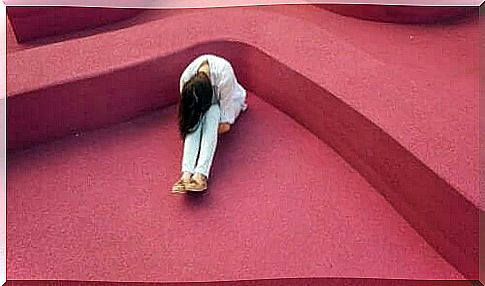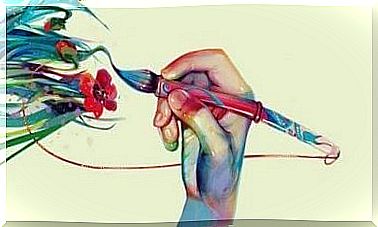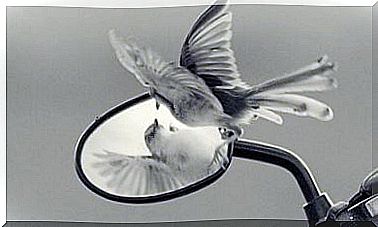Mowrer’s Two-factor Theory: How Your Fears Work

Despite the fact that Mower’s two – factor theory was made known in 1939, it is still one of the most interesting models for two reasons. First, it allows you to understand fear mechanisms and how anxiety disorders and phobias occur. The second reason is that it provides a valuable starting point for dealing with many of the manifestations where fear sets limits to well-being.
To talk about anxiety is to refer to fear and anguish. No dimension is as complex as fear itself. So much so that the poet Horace said that he who lives in fear will never be free. Few arguments are as true as this, but nothing is as typical of man as holding on to worries and fears.
After all, it makes sense, since they are part of human nature and act as survival mechanisms. Nevertheless, they can sometimes lead an individual to a pathological condition. If you were not aware of it, panic disorders, obsessions or phobias orchestrate the daily lives of many thousands of people and prevent them from living a normal life.
These conditions are overbearing, stressful and difficult to explain to someone who does not experience them. Understanding the most basic mechanics of fear can help you uncover your worst enemy. Let’s dive a little deeper into this topic.
Mowrer’s two-factor theory: What does it consist of?
Mowrer’s two – factor theory was introduced by Orval Hobart Mowrer in 1939. This American psychologist and professor of psychology at the University of Illinois is best known for his research on behavioral therapy. One of his interests was to learn where phobias come from and why they are so difficult to eliminate once they have arisen.
For example, it is quite useless to explain to someone who has a fear of flying that the chances of dying while crossing a road are higher than in a plane crash. The mind clings to certain ideas and maintains them over time until they completely change our behavior. Dr. Mowrer was a pioneer in this matter. In fact, he highlighted the mechanisms behind many anxiety processes.

According to Mowrer’s two – factor theory, fear, phobias and anxiety disorders stem from two phases:
- Imagine someone who needs to have control over all aspects of their life, someone who is obsessive and very demanding. Suddenly, they board a plane for the first time and realize that they have no control over that situation.
- They begin to feel trapped and tied high above the ground, causing them to suffer a panic attack. As a consequence , they have not been able to board a plane since then.
- And not only that, but now their fears are even greater. They are terrified of going on vacation or work trips. Being forced to take a plane again intensifies their anxiety even more.
In the example above, you can see two dimensions that define Mowrer’s two-factor theory. Let’s expand them.
Phase 1. Classical condition
Dr. Orval Hobart Mowrer focused his research on behavioral psychology. For this reason, he stated that the first process that mediates the occurrence of phobias and many anxiety disorders is classical conditioning.
- The individual transforms a neutral and harmless stimulus (an airplane, a spider, an event at work, a crowded supermarket, etc.) into a painful or traumatic stimulus.
- For example: “ Ever since I had a bad experience with my colleagues, I find it very difficult to get up, get ready and go to work. That place has become a nightmare for me. “
- As you can see, the person in this phase experiences something seemingly normal in an unpleasant way.
Phase 2. Instrumental conditioning
After being subjected to classical conditioning (a specific stimulus gets a painful connotation), it would be enough to just avoid that situation to return to normal. But when it comes to phobias and anxiety, the brain works differently.
This is when the second phase, instrumental conditioning, comes into play.
Let’s move on to the example of the workplace. If the individual was bullied by his co-workers, it would be more than enough to just leave the job for the suffering to end, right?
- Not really. That is not always the case. It can be much more complex than that. For example, any workspace can trigger memory from the previous experience.
- ” When I remember everything that happened, it is impossible for me to go back to work. My mind connects every job to what I have been through in the past. “
- With this behavior, everything strengthens the fear. It’s a scary stimulus -> they avoid it -> they also avoid anything that reminds them of the original stimulus -> the fear grows.
Therefore, the individual avoids not only the original aversive stimulus, but everything that comes close to it.

How can Mower’s two – factor theory help you?
Mowrer’s two-factor theory shows the irrational basis that many fear has, and how they hold an individual back from living a normal life. First, it is okay to flee from what hurts, from what acts as a real threat. However, many of the phobias and fears are not logical or guarantee that we will survive. On the contrary, some fears do nothing but hinder our growth.
Exposure techniques are very appropriate for dealing with these psychological realities. Putting yourself in front of the frightening phobic stimulus and rationalizing your fear is always a good step forward. In the same way, short strategic therapy is also a good resource for removing blockages from everything that limits you and keeps you immersed in fear.
Fighting your fears is your responsibility. Use the tools you have available to do so.









